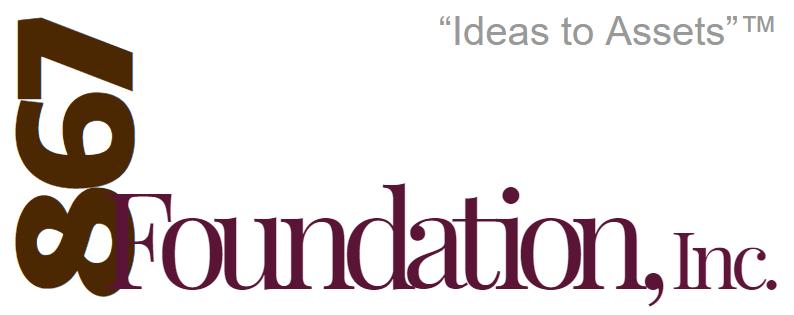The 867 Framework
Our Framework is based on a Creative Commons License
 Since 2009 the '867
Framework was abandoned in the public domain. An idea that was
created to assist those who created intellectual, binary assets
identify, classify and prove ownership of the assets they
creates. The original creators Daniel L. Messick and Christine
Miller decided to give the idea to the world for free under a
Creative Commons License.governed by the 867 Foundation. We use the
designation "867" as it refers to the last three digits of the
original patent filing from 2001.
Since 2009 the '867
Framework was abandoned in the public domain. An idea that was
created to assist those who created intellectual, binary assets
identify, classify and prove ownership of the assets they
creates. The original creators Daniel L. Messick and Christine
Miller decided to give the idea to the world for free under a
Creative Commons License.governed by the 867 Foundation. We use the
designation "867" as it refers to the last three digits of the
original patent filing from 2001. The Concept is simple, Under Common Law and Contract Law if a
person can prove any property is theirs by identifying it and
proving possession, it is theirs by right and possession.
Until now that was done without a formal and standard
structure. Every time someone wanted to protect their
personal, intangible and binary property they had to do it on
their own. Now everyone has a standard, recognizable and
repeatable framework that is legally defensible. It means now
as an artist, photographer, scientist, inventor or musician,
you have a way to identify your idea without giving away the
secret portion of what makes your idea unique and valuable.
This is the essence of the patent and what we call the
transformation of and IDEA into an ASSET. With a world awash
with new ideas and digital artifacts we need a way for the
creators of all that great work to be able to quickly and
economically document, and protect their work so later they
can commercially use it to their benefit.
While the law refers to people, the reality is most of these
ideas are really owned and used by companies and
organizations. But the decision to use the '867 Framework is
made by people, for people. Our process right now is optimized
for organizations. Eventually, we will have a process that is
tailored to the individual. So, If you are an individual
creative, be patient.
So who can use the 867 Framework today, right now? If you
work for even a small company that lives by the ideas that
generate you business, you are a perfect candidate to adopt
the '867 Framework. If you are a mid-sized company you are
beginning to loose track of all the ideas and '867 can be a
great help in organizing and managing your ideas. For the
larger company on the Fortune list, you need the '867
Framework to manage all the ideas people are creating every
day that are getting away from you. Most companies, regardless
of size or industry loose from 10 to 30 percent of their real
value by not leveraging the intangible assets inside your
organization. What would it mean if you could add another 10
percent to your balance sheet value, or as much as 30 percent.
Regardless of size or industry, '867 Framework helps you
organize, your assets, correctly classify them, control who
uses them and how, and helps you arrive at a value for each
asset. That means you can move toward putting something that
you didn't think had a value on your balance sheet. For young
companies starting out, that can be a huge benefit. For more
mature companies it may shock them how much more value they
can create from the unrecognized value in their company.
Many people ask us, does the 867 Framework take the place of
a patent, copyright or trademark? No it does not. It does help
the owner of the asset correctly identify it, structure the
description and collect the proper information needed to file
for government protection as a patent, copyright or trademark,
if they decide that is in their best interest. The interesting
point is you don't have to in order to license your idea,
because the '867 Framework provides a mechanism to license
your idea under a restricted disclosure as a contractual
agreement between parties.
The breakthrough that makes the 867 Framework economically
viable is the invention of distributed ledgers and inexpensive
secure cloud storage. When the original patent was filed, the
those technologies weren't available, but the patent described
a need for those services. Today, we have them and can deploy
them in an economical way that allows anyone to capture the
essence of an idea into an encrypted container and create the
metadata needed to describe the idea, the owner, and when they
created it, the Who, What and When needed to establish legal
ownership.
Get your copy of our whitepaper"The New Economics of '867" |